I mentioned a couple of times recently, that in getting down to having been to pretty much all of the “known” Korean restaurants in the two Koreatowns, I was on the hunt for the more difficult to find spots. The casas de comida, hidden away behind facades that don’t reveal their existence, or in locations you might not ordinarily look for a restaurant.
Way back, I’d seen a listing for Modurang Korean restaurant, somewhere along the line, but I’d come by this address, seen this Miami Vice cyan colored facade, no indication of a restaurant, and just figured I’d gotten it wrong or it was long gone (it is, they closed five years ago when they sold the house to new owners). This was in the days before I knew how much of Buenos Aires’ culinary scene, particularly in “ethnic barrios” goes on behind such fronts. The place is now Bogotá Restaurante, after the street it’s on, Bogotá 3588, Floresta [w3w: stud.trade.showcase]. There’s no sign, just a door buzzer, that I confidently rang, figuring I was about to either discover a restaurant, or apologize to a homeowner. [Closed permanently during the pandemic]
Restaurant, it is. I am clearly the only non-Korean here, other than a couple of the staff. Though listening in a bit, I find that one of the nearby tables is a family of Korean-ancestry tourists from somewhere in Central America, who had heard about this place and wanted to check it out. Although I got a couple of glances from some of the guests, the guy running the room didn’t seem surprised by a white boy coming in, and there was no awkwardness. Other than… the menu is only in Korean. But, handy Google camera ready translate gave me enough to pick out more or less what most of the dishes were, and, later, I, of course, wanted to make it easy for you, so, here’s the translated menu (click on it to blow it up to large enough to read and/or print out):
I picked out a favorite…
Spicy stir-fried calamari, absolutely dead-on delicious, the calamari perfectly tender. Maybe a little heavy on the onions and green onions, but still plenty of tentacles. Rice, and a little selection of banchan – fiery kimchi, the same with pickled daikon, a little beansprout salad, some tofu that wasn’t all that interesting, and a little cold salad of sliced hotdogs and pickled onions – I’ve never quite gotten this Korean fascination with cold hotdogs and pickled vegetables, but it’s at least interesting.
As a note, beyond being completely in Korean, the menu also has no prices on it, but it’s clearly not the kind of place that’s charging big bucks. This plate, plus a bottle of water, and tip, and I was out of there for a shade under 300 pesos.
Firing off some photos on Instagram and all that, I got a near immediate response from Steven, my usual Sunday lunch companion, that he wanted to give it a try too, so we planned another visit a few days later.
Almost the same banchan, but, thankfully, no hotdogs this time, that particular dish replaced by some sauteed eggplant.
Steven’s pick, a classic dolsot bibimbap – vegetables, meat, rice, in a piping hot stone bowl. You let it sit for a few minutes to get a little crunch on the surface of the rice from the bowl, and then mix it all together with a bit of the spicy paste there to the side, to your own tastes. Comes with soup – a rather weak broth we thought, but the bibimbap was delicious and was polished off in minutes.
As was my bowl of kimchi jigae, a stew, or soup, of fiery kimchi and pork. Some people leave the rice on the side to just eat a little at a time, some mix some in, I put it all in, and happily slurp my way to the bottom of the bowl.
These are not huge portions, though perfectly satisfying, and we could have headed out at this point, but I really wanted to try the cold noodles. I was, however, thinking about a different cold noodle dish – where it’s basically a bowl of sweet potato noodles either in or on the side of an icy cold broth – a favorite way to end a Korean meal. Which may account for the chef/owner’s quizzical looks when I ordered it, but she brought it nonetheless.
This version was somen, the very thin, pale white wheat noodles, topped with vegetables, a hard boiled egg, and a spicy sauce to mix together. It was delicious, and we didn’t do too badly…
…though didn’t quite empty the bowl.
This time we actually got a hand-written bill from her, and she was, by the way, delightful to chat with a bit about the restaurant and Korean food. Oh, and she was delighted to have a copy of the menu translated into English to keep around. The dishes all run, it seems 250 or 260 pesos apiece, which is a bargain for this quality and quantity. This fills the empty space left by the closing of Kil Jung (which rumor has it just moved to elsewhere in Koreatown, but so far I haven’t been able to find it). True homestyle Korean cooking, in, a Korean home.
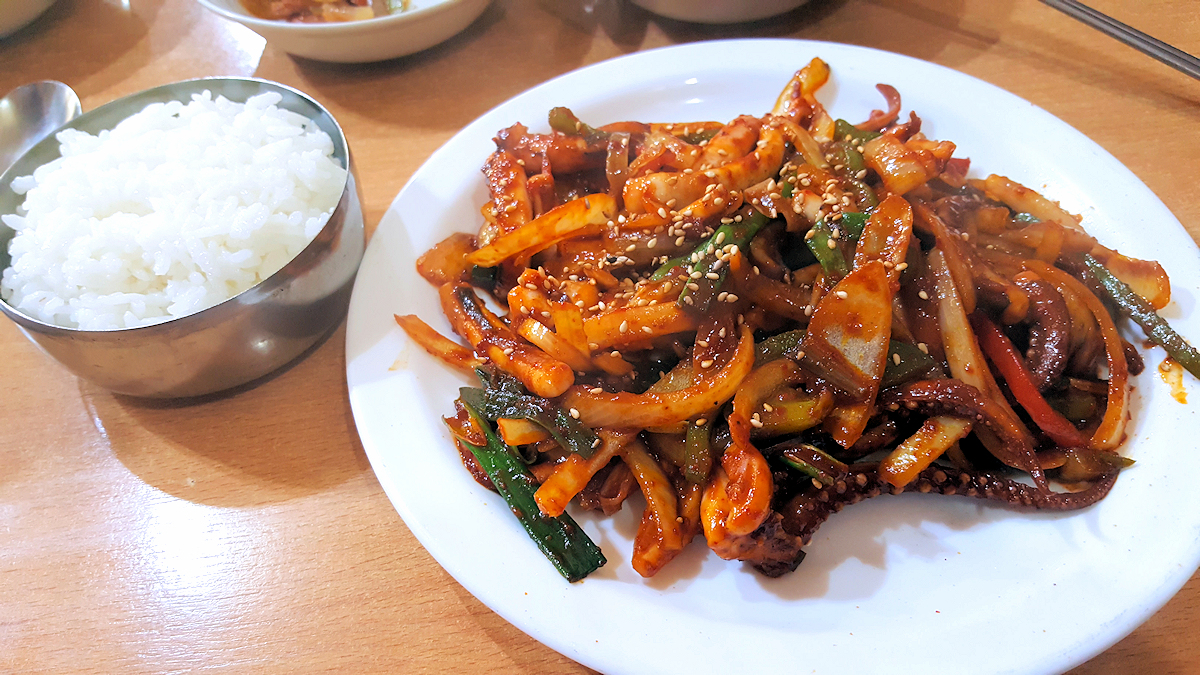
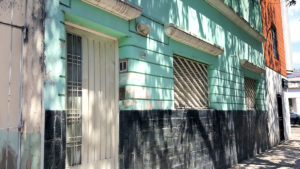
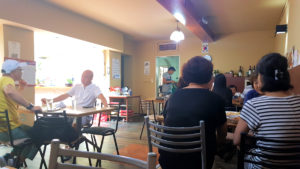
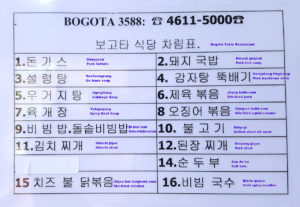
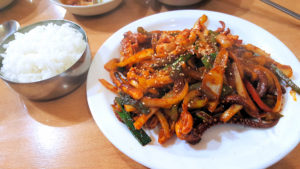
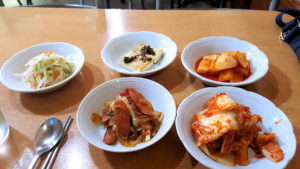
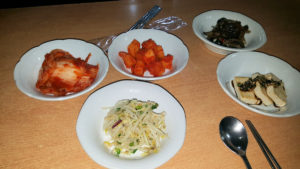
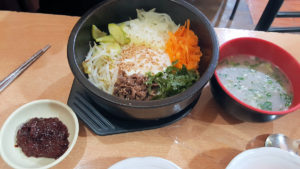
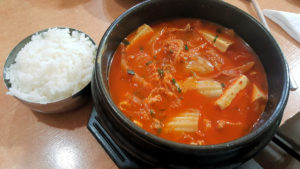
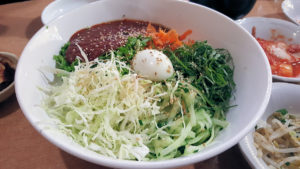
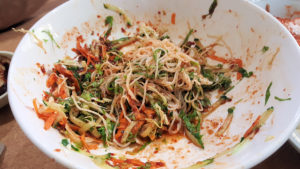
[…] Jang Geum, and which is a better deal, and only a couple of blocks from others, like Singul Bongul, Bogotá, and Doma. Still, it fills in a nice niche on this alleyway. I’ve put the shabu-shabu and […]